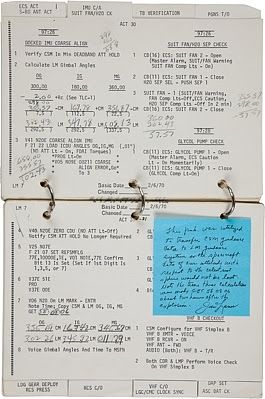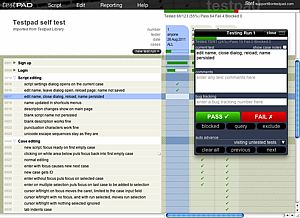Checklists. For bringing home Apollo 13. And software.

Checklists. For bringing home Apollo 13. And software.
Testpad explores the practicality and effectiveness of using checklists as a simplified and adaptable approach to software testing, emphasizing their role in ensuring thorough testing without the complexity of formal methodologies.

ouston, we have a problem” is what everyone remembers... what happened next was Commander Lovell got out a checklist for Lunar Module Systems Activation, pictured below, and used it to ensure Apollo 13 made it safely home. And if you want to own the very checklist he scribbled his notes on, it’s going up for auction on Nov 30th here (edit: too late, that was back in 2011).
Everyone knows what a checklist is. The diligent (or forgetful) amongst us probably even have one for what to pack to go on holiday. You just can’t argue with their ability to make sure you’ve remembered everything.
When it comes to shipping software, deploying a website or submitting an app to the App store, you similarly want to ensure you’re remembered to check everything. Now this, of course, is the domain of software testing, and many methodologies abound, all sparring for a medal placing on the podium of Best Practice.
But why make such a meal of it?
Why not just whip up and maintain a checklist?
A checklist is really the same as a “Test Plan”, but it just sounds simpler, somehow more approachable. It’s also inherently adaptable to a light or heavy touch when it comes to the degree of control you want to assert or complexity of the software you’re testing.
Checklists can start really simple. Just list the main features that you want to check are working. Then add more detail as time and resources allow; extend it with bugs you missed last time; fold in more detailed scenarios; or concentrate on areas you know are more risky or problematic.
You can treat checklists as a guide to steer Exploratory Testing (formalized ad-hoc testing), as a charter in Session Based Testing, or as a fully scripted Test Plan. You can even layer on a risk model like Google’s recent Attributes-Components-Capabilities approach. Whatever suits your situation.
It was with this thinking that we built Testpad. If these ideas resonate, you should definitely give Testpad a try! The hope is that it will get more projects doing their testing that bit better, and without succumbing to procrastination for fear of having to choose a complicated-sounding methodology.
As Cmdr Lovell appreciated, apart from having to do some trajectory math 200,000 miles from Earth in a cold, cramped, and oxygen-depleted environment, having a ‘simple’ checklist to follow was a lifesaver.
It’s not rocket science.... usually.


